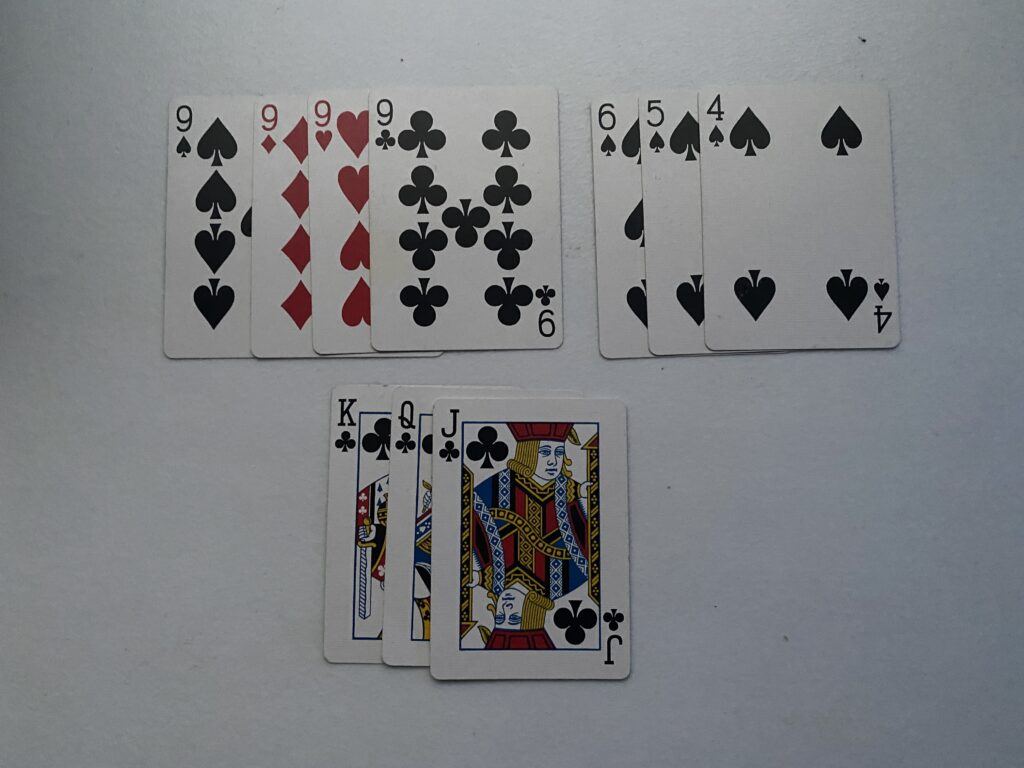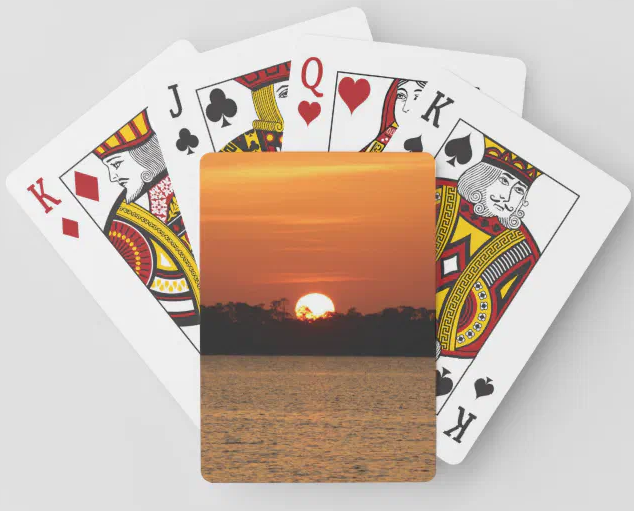
Gin Rummy is a classic two-player card game that has been enjoyed by card enthusiasts for generations. It combines elements of skill, strategy, and luck, making it a compelling game that can provide hours of entertainment. This article will guide you through the basics of Gin Rummy, including the number of players, the rules of the game, how to get started, how to win, and some helpful strategies to improve your gameplay.
Number of Players
Gin Rummy is traditionally played with two players, but variations exist for more participants. However, the classic game is best-enjoyed one-on-one, where each player competes directly against the other. Something to consider if you want to try and play with more than 2 people is to use two decks of cards.
Rules of the Game
The primary objective of Gin Rummy is to form valid combinations of cards, called melds, and minimize the points left in your hand that are not part of these melds. A meld can be either a set (three or four cards of the same rank) or a run (three or more consecutive cards of the same suit).
The Deck
Gin Rummy uses a standard 52-card deck. The cards rank from Ace (low) to King (high). Aces are worth 1 point, face cards (King, Queen, Jack) are worth 10 points each, and the remaining cards are worth their face value.
Setup
- Shuffling and Dealing: The dealer can be chosen randomly or by cutting the deck, with the player drawing the lowest card becoming the dealer. Each player is dealt ten cards. The remaining deck is placed face down on the table to form the stockpile. The top card of the stockpile is placed face up next to it to start the discard pile.
- The Play: The non-dealer goes first. The game proceeds with players taking turns. A turn consists of two actions:
- Drawing a card: The player can either draw the top card from the stockpile or the top card from the discard pile.
- Discarding a card: After drawing, the player must discard one card from their hand to the discard pile.
Basic Turn Structure
- Draw a Card: On your turn, draw one card from either the stock pile or the discard pile.
- Form Melds: Try to form sets and runs with the cards in your hand.
- Discard a Card: After drawing and considering your melds, discard one card to the discard pile.
Melds
A valid meld can be:
- Set: Three or four cards of the same rank (e.g., 7♦ 7♠ 7♣).
- Run: Three or more consecutive cards of the same suit (e.g., 4♠ 5♠ 6♠).
Players aim to create these melds and reduce their deadwood, which are the cards that do not form part of a meld.
Knocking
A player can “knock” when the total value of their deadwood cards is 10 points or less. To knock, the player discards a card face down, signaling the end of the hand. The other player then gets one final turn to lay down any melds and reduce their deadwood.
 | Check out my assortment of playing cards. Over 50 designs to choose from!!! 2.5” X 3” poker-sized playing cards. 52 cards plus 2 joker cards. Comes in a simple and elegant cardboard box. SHOP NOW |
Scoring
- Deadwood Points: After knocking, players calculate the total points of their deadwood. The player with fewer deadwood points wins the hand and scores points equal to the difference between the two players’ deadwood points.
- Gin Bonus: If a player manages to knock with no deadwood (all cards form melds), this is called going “Gin,” and they receive a 25-point bonus plus the opponent’s deadwood points.
- Undercut Bonus: If the opponent has fewer or the same number of deadwood points than the player who knocked, they win an undercut bonus of 25 points plus the difference in deadwood points.
Winning the Game
Gin Rummy is typically played in multiple rounds until one player reaches a predetermined score, usually 100 points. The player with the highest total score at the end of the game is declared the winner.
Steps To A Winning Hand
Winning in Gin Rummy involves a combination of strategic play and effective hand management. Here are the key steps to winning a hand and ultimately the game:
- Forming Melds: Focus on forming sets and runs quickly to reduce your deadwood.
- Knocking Wisely: Knock when you have 10 or fewer points of deadwood, but also consider your opponent’s potential deadwood.
- Going Gin: Aim to go Gin for the maximum points, but don’t hold out for it if a lower deadwood knock will win the hand.
- Scoring Efficiently: Pay attention to scoring opportunities, such as undercutting your opponent or maximizing your deadwood reduction.
Helpful Strategies
- Pay Attention to Discards: Keep an eye on the cards your opponent picks up and discards. This can give you clues about their hand and help you avoid discarding the cards they need.
- Balance Your Hand: Try to keep a balance of potential sets and runs. This flexibility allows you to adapt based on the cards you draw.
- Early Game Strategy: In the early stages, focus on drawing from the stock pile to keep your hand concealed. Avoid discarding high-value cards early unless necessary.
- Mid to Late Game Strategy: As the game progresses, consider drawing from the discard pile if it helps complete your melds. Be cautious about discarding cards that might help your opponent.
- Hold Key Cards: Holding onto key cards that your opponent might need can prevent them from forming their melds.
- Watch the Score: Be mindful of the overall score and adapt your strategy. If you’re close to winning, you might take fewer risks to secure the points needed.
- Adapt Your Knocking Strategy: Sometimes it’s better to hold off on knocking to reduce your deadwood further, especially if you suspect your opponent has a high deadwood count.
- Bluffing: Occasionally discarding cards that might seem useful to your opponent can mislead them about your hand’s strength.
Advanced Strategies
- Card Counting: Try to remember which cards have been discarded to better estimate the remaining cards in the deck and your opponent’s hand.
- Defensive Play: When ahead in points, play more conservatively. Discard cards that are unlikely to help your opponent and focus on reducing your deadwood.
- Aggressive Play: If you’re behind in points, you might need to take more risks, such as drawing from the discard pile more frequently and aiming for a quick knock or Gin.
Final Thoughts
Gin Rummy is a delightful blend of strategy, skill, and luck. By understanding the rules, developing a solid strategy, and paying attention to your opponent’s moves, you can become proficient at this classic card game. Whether you’re playing for fun or in a competitive setting, the key is to enjoy the process and continuously refine your approach. Happy playing!
Did you enjoy this post? Do you want to know when the next post comes out? Consider subscribing. I only send update emails once a week, usually on Friday. Try it out. You can unsubscribe at any time.
